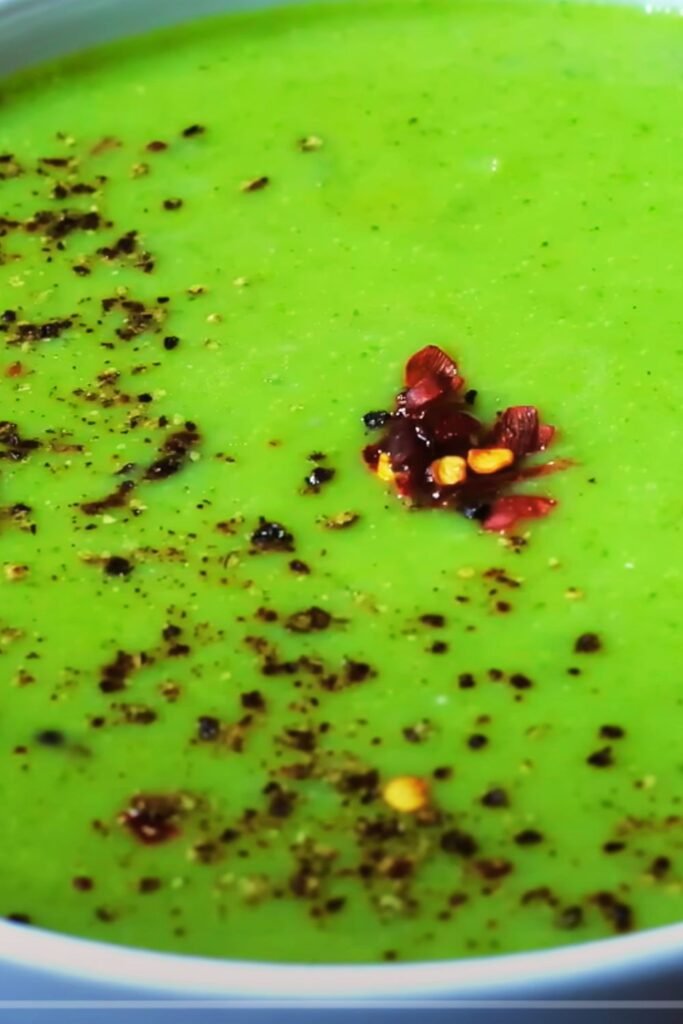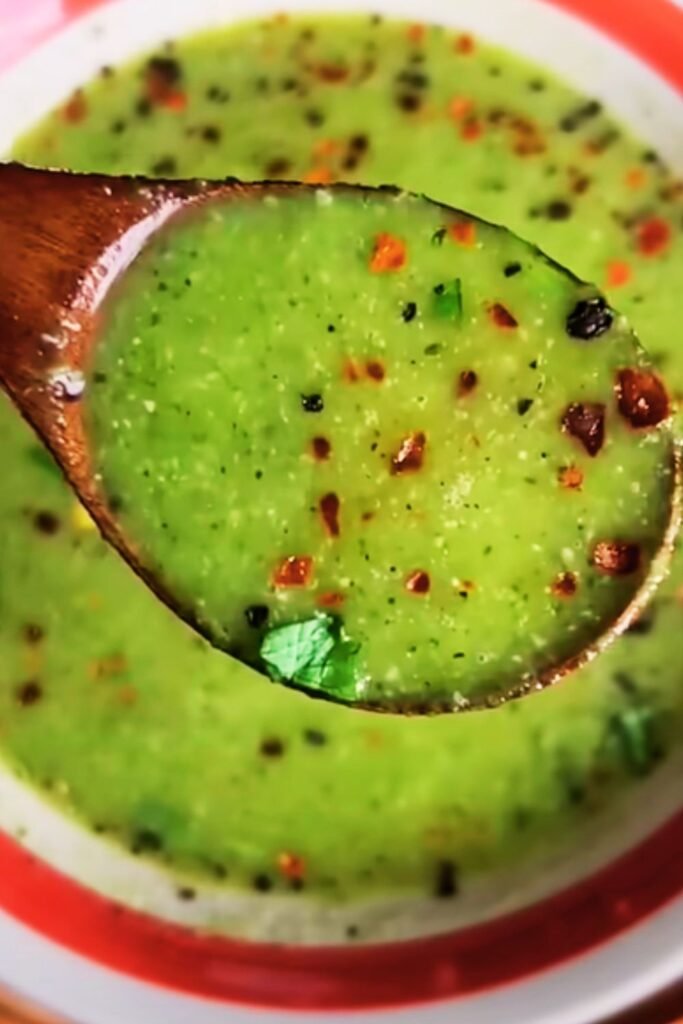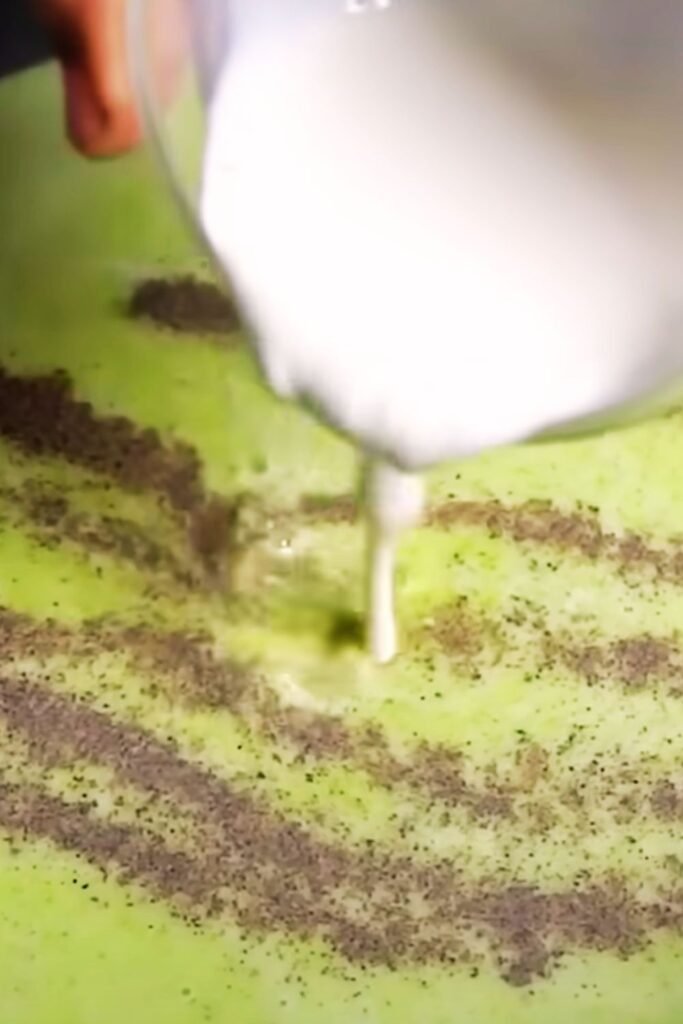There’s something magical about a bowl of creamy, velvety broccoli soup that warms you from the inside out. As someone who’s been perfecting this recipe for years, I can tell you that making restaurant-quality cream of broccoli soup at home is not only possible but surprisingly simple. My grandmother first taught me this recipe during a snowy winter evening, and I’ve been refining it ever since to create the perfect balance of flavors and textures.
This isn’t just another soup recipe – it’s a comfort food masterpiece that transforms humble broccoli into a luxurious, satisfying meal. Whether you’re looking to sneak more vegetables into your family’s diet or simply craving something warm and nourishing, this cream of broccoli soup delivers on all fronts. I’ve served this to skeptical teenagers who claimed to hate broccoli, only to watch them ask for seconds and thirds.
What Makes This Recipe Special
My approach to cream of broccoli soup focuses on building layers of flavor while maintaining the vibrant green color and nutritional benefits of fresh broccoli. Unlike many recipes that rely heavily on heavy cream and flour, I use a combination of techniques that create natural creaminess while keeping the soup relatively light and digestible.
Fresh Broccoli Selection : Choose broccoli heads with tight, dark green florets and firm stems. Avoid yellowing florets or woody stems, as these indicate older produce that will affect the soup’s flavor and texture.
Aromatics Base : The foundation of great soup starts with properly sautéed onions, garlic, and celery. I always cook these until they’re translucent but not browned, which ensures a clean, bright flavor profile.
Broth Quality : Using high-quality vegetable or chicken broth makes a significant difference. I prefer low-sodium versions so I can control the salt level myself.
Cream Integration : The secret to smooth, lump-free cream integration lies in tempering – gradually warming the cream before adding it to prevent curdling.
Essential Ingredients and Their Roles

| Ingredient | Amount | Purpose | Substitution Options |
|---|---|---|---|
| Fresh Broccoli | 2 large heads (about 2 lbs) | Main flavor and nutrition | Frozen broccoli (thawed and drained) |
| Yellow Onion | 1 medium | Aromatic base | White onion, shallots |
| Celery Stalks | 2-3 stalks | Adds depth and texture | Fennel bulb (milder flavor) |
| Garlic Cloves | 4-5 cloves | Flavor enhancement | Garlic powder (1 tsp) |
| Vegetable Broth | 4 cups | Liquid base | Chicken broth, homemade stock |
| Heavy Cream | 1 cup | Creaminess | Half-and-half, coconut cream |
| Butter | 3 tablespoons | Fat for sautéing | Olive oil, coconut oil |
| All-purpose Flour | 3 tablespoons | Thickening agent | Cornstarch, arrowroot powder |
| Sharp Cheddar | 1 cup shredded | Richness and flavor | Gruyère, white cheddar |
| Nutmeg | 1/4 teaspoon | Warmth and complexity | Mace, white pepper |
| Salt | To taste | Flavor enhancement | Sea salt, kosher salt |
| Black Pepper | 1/2 teaspoon | Spice balance | White pepper |
Step-by-Step Preparation Method
Preparation Phase (15 minutes)
I always start by organizing my ingredients and tools. This mise en place approach ensures smooth cooking without scrambling for items mid-recipe.
Broccoli Preparation : Cut the broccoli into uniform florets, about 1-inch pieces. Don’t discard the stems – peel them with a vegetable peeler and dice them finely. The stems add wonderful flavor and nutrients to the soup.
Vegetable Prep : Dice the onion into small, uniform pieces. Mince the garlic finely, and slice the celery thinly. Having everything prepped before I start cooking makes the process much more enjoyable and prevents burning.
Cooking Process (35 minutes)
Building the Flavor Base (8 minutes)
In a large, heavy-bottomed pot, I melt the butter over medium heat. The key here is not to let it brown – I want just enough heat to create a fragrant base without adding any bitter notes.
Add the diced onions and celery to the melted butter. I cook these vegetables slowly, stirring occasionally, until they become translucent and fragrant. This usually takes about 5-6 minutes. The onions should never brown, as this would change the soup’s color and flavor profile.
Next, I add the minced garlic and cook for just 1-2 minutes until fragrant. Garlic can turn bitter quickly, so I watch it carefully and stir constantly during this step.
Creating the Roux (3 minutes)
Sprinkle the flour over the sautéed vegetables and stir constantly for 2-3 minutes. This creates a light roux that will thicken the soup naturally. The mixture should bubble gently but not brown. I’m looking for a paste-like consistency that coats the vegetables evenly.
Adding Liquid and Broccoli (15 minutes)

Gradually whisk in the vegetable broth, starting with just a cup to prevent lumps. I whisk constantly while adding the liquid, ensuring the roux dissolves completely. Once smooth, I add the remaining broth.
Add the prepared broccoli florets and diced stems to the pot. Bring the mixture to a boil, then reduce heat to maintain a gentle simmer. I cover the pot and cook for 12-15 minutes, until the broccoli is very tender when pierced with a fork.
Blending for Creaminess (5 minutes)
This is where the magic happens. Using an immersion blender, I blend about 75% of the soup, leaving some texture with small broccoli pieces. If you don’t have an immersion blender, carefully transfer half the soup to a regular blender, blend until smooth, then return it to the pot.
The key is achieving the right balance – smooth enough to be creamy, but with enough texture to be interesting. I taste and adjust the consistency by blending more if needed.
Final Enrichment (4 minutes)
Remove the pot from heat before adding the cream – this prevents curdling. In a small bowl, I whisk together the heavy cream with a ladle of the hot soup to temper it. Then I slowly stir this mixture back into the pot.
Add the shredded cheese gradually, stirring until melted and incorporated. Season with salt, pepper, and a pinch of nutmeg. The nutmeg adds a subtle warmth that elevates the entire dish.
Nutritional Benefits and Health Information
| Nutrient | Per Serving | Daily Value % | Health Benefits |
|---|---|---|---|
| Vitamin C | 135mg | 150% | Immune system support, antioxidant |
| Vitamin K | 92mcg | 77% | Bone health, blood clotting |
| Folate | 78mcg | 20% | Cell division, DNA synthesis |
| Fiber | 6g | 24% | Digestive health, satiety |
| Protein | 12g | 24% | Muscle maintenance, energy |
| Calcium | 245mg | 25% | Bone and teeth health |
| Iron | 2.1mg | 12% | Oxygen transport, energy |
| Calories | 285 | 14% | Moderate calorie content |
Broccoli is truly a nutritional powerhouse, and this soup preserves most of these benefits while making them more accessible and enjoyable. The addition of dairy products increases the protein and calcium content, making this soup a well-balanced meal option.
I find that serving this soup provides sustained energy without the heavy feeling that comes from more indulgent cream soups. The fiber content helps with satiety, making it an excellent choice for those managing their weight.
Serving Suggestions and Pairings

Immediate Serving Options
I love serving this soup in warmed bowls with a variety of toppings that guests can customize to their preferences:
- Crunchy Elements: Toasted pumpkin seeds, croutons made from sourdough bread, or crispy bacon bits
- Fresh Herbs: Chopped chives, fresh thyme leaves, or a small amount of fresh dill
- Cheese Options: Extra sharp cheddar, a dollop of Greek yogurt, or freshly grated Parmesan
- Textural Contrast: A drizzle of good olive oil, a swirl of cream, or some roasted broccoli florets
Bread Pairings
Nothing complements cream of broccoli soup like the right bread. My favorite pairings include:
- Crusty sourdough bread, lightly toasted and buttered
- Homemade dinner rolls, still warm from the oven
- Focaccia bread with herbs and olive oil
- Simple cornbread with a touch of honey
- Garlic breadsticks for a more casual meal
Complete Meal Ideas
When I serve this soup as a main course, I like to round out the meal with:
- A crisp green salad with apple slices and walnuts
- Grilled cheese sandwiches made with sharp cheddar
- A platter of fresh vegetables with hummus
- Roasted seasonal vegetables as a side dish
- A light quinoa salad with lemon vinaigrette
Storage and Reheating Guidelines
Refrigeration
This soup stores beautifully in the refrigerator for up to 4 days. I always let it cool completely before transferring it to airtight containers. The soup will thicken as it cools, which is completely normal.
When I’m meal prepping, I portion the soup into individual containers for easy grab-and-go lunches. Glass containers work best as they don’t absorb odors and reheat evenly in the microwave.
Freezing Considerations
While this soup can be frozen, I need to mention that cream-based soups sometimes separate when thawed. If you plan to freeze it, I recommend doing so before adding the cream and cheese. You can then add these ingredients when reheating.
Properly stored, the soup base (without cream) can be frozen for up to 3 months. I use freezer-safe containers or heavy-duty freezer bags, leaving some space for expansion.
Reheating Methods
Stovetop Method: This is my preferred method. Heat gently over low-medium heat, stirring frequently. If the soup has thickened too much, I add a little broth or milk to reach the desired consistency.
Microwave Method: Heat in 1-minute intervals, stirring between each interval. This prevents hot spots and ensures even heating.
From Frozen: I always thaw frozen soup overnight in the refrigerator before reheating. Attempting to heat it from frozen can result in uneven heating and texture issues.
Troubleshooting Common Issues
Soup Too Thin
If my soup turns out thinner than desired, I have several solutions:
- Create a slurry with 1 tablespoon cornstarch and 2 tablespoons cold water, then stir it into the simmering soup
- Simmer uncovered for an additional 10-15 minutes to reduce and concentrate
- Blend more of the soup to release additional starches from the broccoli
- Add more cheese, which naturally thickens as it melts
Soup Too Thick
When the soup becomes too thick, usually after refrigeration:
- Gradually stir in warm broth, milk, or cream until reaching desired consistency
- Heat gently while thinning to prevent shocking the dairy components
- Taste and adjust seasonings after thinning, as dilution may require additional salt or pepper
Lumpy Texture
Prevention is key, but if lumps do form:
- Strain the soup through a fine-mesh sieve, pressing solids through with a spoon
- Use an immersion blender to smooth out any remaining lumps
- For future batches, ensure the roux is smooth before adding liquid, and add liquid gradually while whisking
Curdled Cream
If the cream curdles:
- Remove from heat immediately and let cool slightly
- Blend with an immersion blender to re-emulsify
- Strain if necessary to remove any remaining curdles
- In future preparations, temper the cream before adding and keep heat moderate
Seasonal Variations and Adaptations
Spring Variation
In spring, I love adding fresh peas and asparagus tips during the last few minutes of cooking. This creates a beautiful green soup with varied textures and a fresh, vibrant flavor profile.
Summer Adaptation
During summer months, I sometimes serve this soup chilled as a refreshing gazpacho-style dish. I add extra herbs like basil or mint and serve with a dollop of Greek yogurt.
Fall Enhancement
Autumn calls for heartier variations. I might add roasted butternut squash or sweet potato, which complements the broccoli beautifully and adds natural sweetness.
Winter Comfort
In cold months, I make this soup extra rich by adding cream cheese along with the heavy cream, and sometimes include small pasta shapes to make it more filling.
Questions and Answers
Q. Can I make this soup dairy-free? Absolutely! I substitute coconut cream for the heavy cream and use nutritional yeast instead of cheese. The result is surprisingly creamy and delicious, though the flavor profile changes slightly. Cashew cream also works wonderfully if you blend soaked cashews with water.
Q. How can I make this soup lower in calories? I often make a lighter version using milk instead of heavy cream, reducing the butter, and using a smaller amount of cheese. You can also bulk up the soup with additional vegetables like cauliflower or zucchini without significantly increasing calories.
Q. What’s the best way to get my kids to eat this soup? I’ve found that involving children in the cooking process helps tremendously. Let them help wash the broccoli or measure ingredients. I also sometimes blend the soup completely smooth and serve it with fun shaped crackers or let them add their own toppings.
Q. Can I use frozen broccoli instead of fresh? Yes, frozen broccoli works well in this recipe. Use about 1.5 pounds of frozen broccoli florets. There’s no need to thaw them first – just add them directly to the simmering broth and cook until tender. The cooking time might be slightly shorter since frozen broccoli is typically partially cooked.
Q. How do I prevent the soup from turning brown? To maintain that beautiful green color, avoid overcooking the broccoli and don’t let the aromatics brown during the initial sautéing phase. Adding the cream off the heat also helps preserve the color. Some cooks add a pinch of baking soda to help maintain the green color, though I find this unnecessary with proper technique.
Q. Can I add other vegetables to this soup? Certainly! I often add cauliflower, leeks, or spinach. Root vegetables like carrots or parsnips work well too, though they’ll change the color. Add harder vegetables with the broccoli, and softer ones like spinach during the last few minutes of cooking.
Q. What type of broth works best? I prefer a good-quality vegetable broth for the cleanest flavor, but chicken broth adds richness. Avoid broths that are too salty or have strong flavors that might compete with the broccoli. Homemade stock is always the best option if you have it available.
Q. How do I know when the broccoli is cooked enough? The broccoli should be very tender when pierced with a fork – tender enough that it offers no resistance. This ensures it will blend smoothly and create the creamy texture we’re after. Undercooked broccoli will result in a grainy soup.
Q. Can I make this soup in a slow cooker? While possible, I don’t recommend it for this recipe. The slow cooker tends to overcook the broccoli, turning it grayish and affecting the flavor. If you must use a slow cooker, add the broccoli during the last hour of cooking and use the low setting.
Q. What should I do if my soup tastes bland? Taste and season carefully. Often, the soup needs more salt than you might expect. I also add a squeeze of fresh lemon juice, which brightens all the flavors. A pinch of garlic powder or onion powder can help if the aromatic base wasn’t strong enough. Don’t forget that pinch of nutmeg – it makes a significant difference.
Q. How can I make this soup more filling? To make it heartier, I sometimes add cooked quinoa, brown rice, or small pasta shapes. Diced potatoes cooked with the broccoli also add substance. For protein, consider adding cooked chicken, white beans, or even crumbled tofu for vegetarian options.
Q. Is it normal for the soup to separate when reheated? Some separation is normal, especially if the soup has been frozen. Gentle reheating while stirring usually brings it back together. If it remains separated, a quick blend with an immersion blender will re-emulsify the ingredients.
This cream of broccoli soup has become a staple in my kitchen, and I hope it becomes one in yours too. The combination of nutritious vegetables, creamy texture, and comforting warmth makes it perfect for any season. Whether you’re cooking for picky eaters, health-conscious family members, or simply treating yourself to something delicious, this recipe delivers every time. The best part is how adaptable it is – you can make it your own with different seasonings, vegetables, or garnishes while maintaining that perfect creamy, satisfying base that makes everyone ask for seconds.